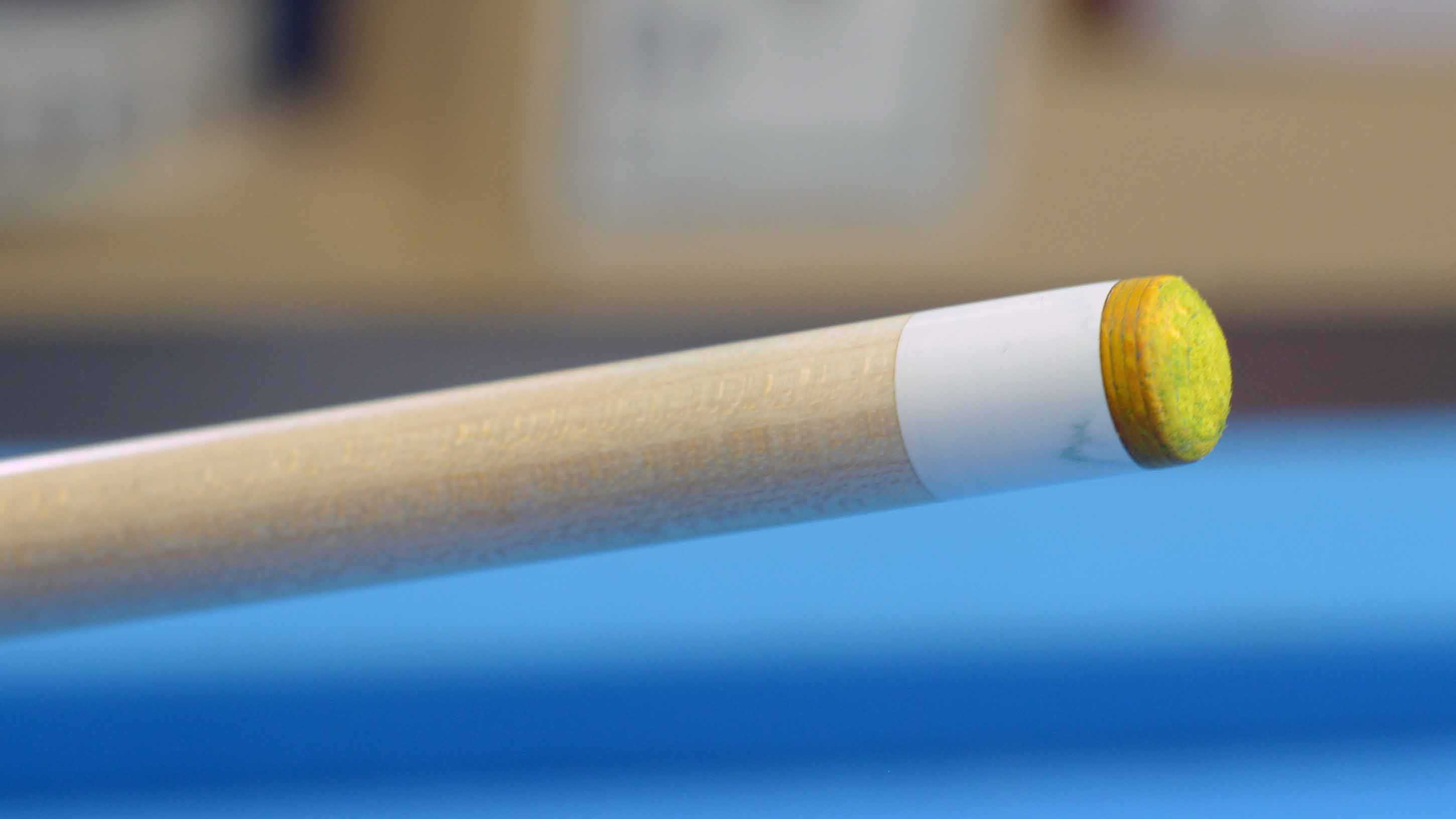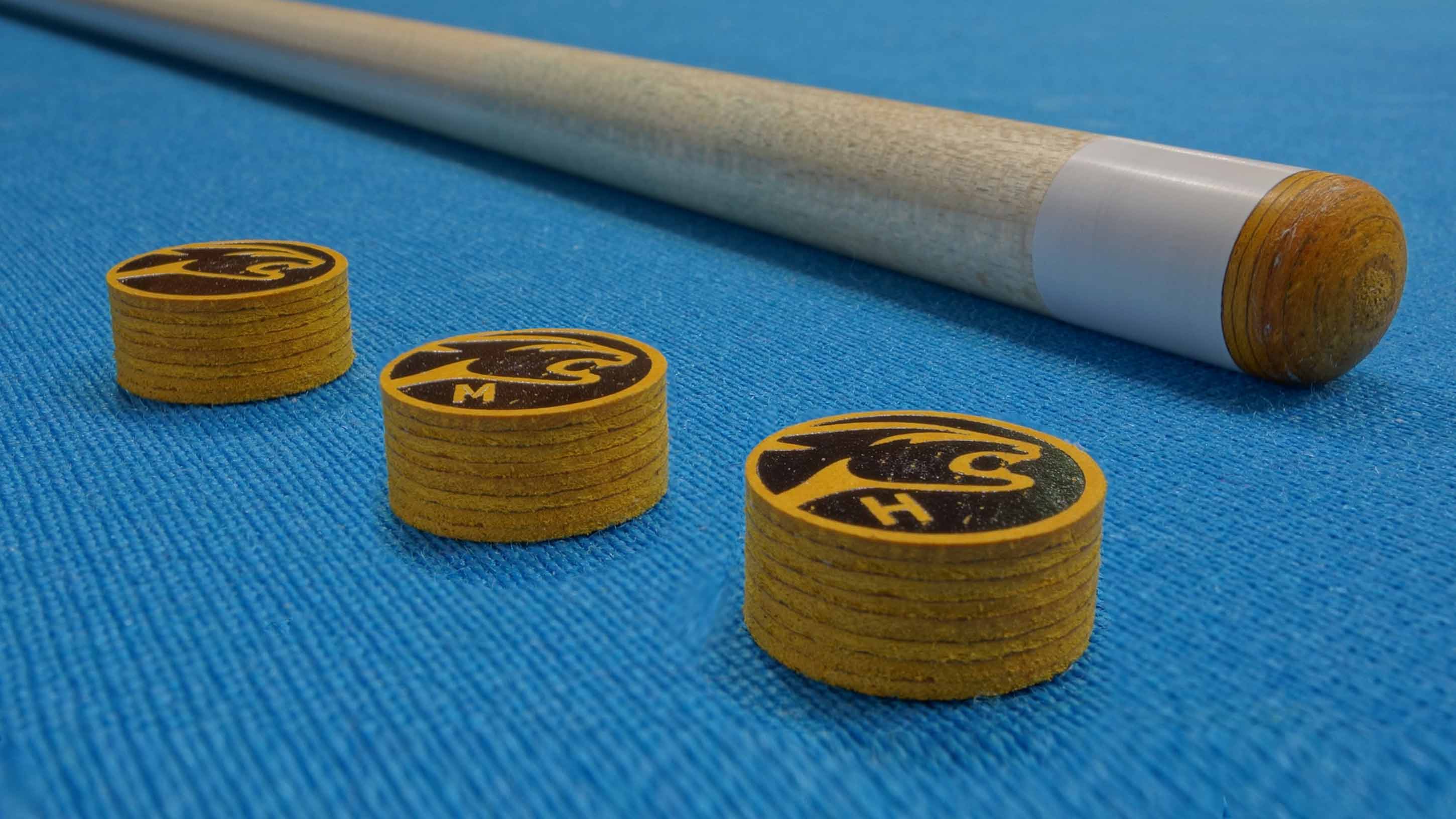Best Medium Pool Cue Tip Guide In 2024
Are you ready to elevate your pool game to new heights? Choosing the right pool cue tip is a pivotal decision that significantly impacts your control, spin, and overall performance on the table.
The world of pool cue tips might seem vast and complex, but understanding the nuances of different tip types can make a world of difference. This comprehensive guide will illuminate the path, helping you navigate the options and discover the perfect tip to complement your playing style. From the subtleties of soft tips to the power of hard tips, we'll explore the key factors to consider, ensuring you make an informed choice that enhances your game.
Before diving in, it's crucial to understand the fundamental role a cue tip plays. The tip is the point of contact between your cue and the cue ball. Its characteristics primarily its hardness, but also its shape and material directly influence how you impart spin, control the cue ball's movement, and ultimately, sink those winning shots. Consider the impact you want to make, and the tip will help you to hit every cue ball at the right spot with your intended direction, spin, and strength. This translates to more confidence in your shots, which in turn, leads to a more enjoyable and successful playing experience.
| Feature | Description |
|---|---|
| Overview | This guide focuses on the best pool cue tips, analyzing their properties, who they are best suited for, and how they improve your game. This guide is for the year 2025, providing information on the current trends and top choices in cue tips. |
| Hardness | Cue tip hardness is a significant factor, and tips are typically classified as soft, medium, or hard. Each type offers unique advantages that cater to various playing styles. |
| Impact on Game | The right cue tip significantly influences control, spin, and overall performance. Choosing the right tip can drastically improve your confidence and shot-making abilities. |
| Key Considerations | The choice of a cue tip depends on personal preference, playing style, and the type of game being played (e.g., playing cue vs. breaking cue). Other factors include the ability to impart spin or "english" on the cue ball. |
| Types of Tips | Tips range in hardness, from "super soft" to phenolic (as hard as the cue ball). Softer tips are often preferred for their ability to maximize spin, while medium and larger tips may offer better control. |
| Maintenance and Longevity | Softer tips generally need to be replaced more often than medium or hard tips, as they tend to mushroom more quickly. |
| Brands | Various brands are available, each with unique offerings. Collapsar, Cuesoul, and Kamui are a few, known for their features and benefits in the market. |
For more detailed information and specific cue tip density information, check out our pool cue tip density chart. This will help you to understand the details of each tip type.
Let's begin by examining the different hardness levels and their impact on your game. Soft tips, as the name suggests, are designed to absorb more energy upon impact. This extended contact time between the cue tip and the cue ball allows for enhanced spin control. Players who favor "english" or incredible spins often find soft tips advantageous. They provide greater opportunities for manipulating the cue ball's movement around the table. Beginners often find soft tips easier to use when learning how to impart proper spin.
However, soft tips have their drawbacks. The softer material tends to mushroom more quickly than medium or hard tips, meaning they require more frequent replacement. The overall feel of the shot is also often softer. If you're a player who's just starting out and focusing on the techniques for reading the table, a softer tip might be the right choice. It's important to note that while playing on different tables, you'll begin to recognize similarities and dissimilarities, which is an important point.
Medium tips provide a balance between spin control and durability. They offer a firmer feel than soft tips, resulting in more power and precision. Players who prioritize both spin and control often find medium tips ideal. Many professional players use medium tips because they offer a good blend of performance characteristics. If you're a fan of incredible spins or "english" but are also in search of a low-maintenance cue tip, the Predator Victory Medium cue tip might be the perfect match.
Hard tips are the most durable option, with the least amount of energy absorption. They offer maximum power transfer, which is especially beneficial for break shots. Because of their firmness, they minimize the impact of the tip and help improve accuracy. Hard tips are favoured by players who prioritize power and control over spin. They are often used on a breaking cue, where the goal is to disperse the rack of balls with maximum force. The advantage of a hard tip is that it is generally more durable and requires less maintenance than soft tips, which tend to wear out more quickly.
What cue tip do pros use? The answer is not so simple. Whether its a soft, medium, or hard tip, the choice depends on a players preference and playing style. Professionals often experiment with different hardness levels to find the ideal tip for their game. The key to a better shot is always to find the right combination of tip, player style, and table condition.
When selecting a pool cue tip, several factors should be considered. The hardness of the tip should be compatible with your playing style. If you favor a softer tip for spin, consider factors like the frequency of replacement. For those who prefer more control and power, a medium or hard tip might be the better option. Your experience level also matters; beginners often benefit from softer tips as they learn the fundamentals of spin. Always consider the playing conditions, as certain tips might perform better on specific tables or with certain types of balls.
The material of the cue tip also impacts its performance. Cue tip hardness refers to the density of the cue tip material, usually made of leather. Various materials are used in the manufacture of cue tips, each with a different feel and performance characteristic. Some tips are made from a single layer of leather, while others consist of multiple layers, often glued together. Multi-layered tips tend to retain their shape better and offer more consistent performance.
The brand and model of the cue tip also matter. Numerous brands offer various types of tips, and some are designed for specific playing styles. Collapsar, Cuesoul, and Kamui are just some examples of the brands that are available in the market. Collapsar is an American/Japanese firm, and most of their cue tips are sold through a dealer. Their pool cue tips consist of 6 layers of pigskin leather and come in three different levels of hardness. The Kamui Black Soft tip is a favorite among players, and the Kamui Snkr Medium tip is popular in snooker cues. The Cuesoul brand is known for its cues, cue tips, and other pool accessories, particularly among beginners.
The shape of the tip affects its contact with the cue ball. Tips come in various shapes, from flat to rounded. The shape impacts the accuracy of the shot and the level of control. A well-shaped tip can improve your game by making it easier to make contact with the cue ball in the spot you want to hit, which provides greater control and increases your chances of succeeding.
The installation of the tip is also essential for optimal performance. A minimal amount of glue guarantees a perfectly aligned installation to achieve the designed tip and cue performance. It is best to try different tip brands and strengths until you find one that works best for you. If you are not experienced in installing a tip, consult a professional to do it for you, to ensure a precise and accurate application that will maximize the performance of your new tip.
Master your game with our snooker cue tip shaper, combining grinding, polishing, and pricking functions. This tool helps maintain and shape your cue tip properly. Maintenance is crucial for the longevity and performance of your cue tip. Regular maintenance, such as shaping and trimming, can prevent damage and ensure optimal performance. With proper care, your cue tip will last longer and maintain its quality.
Explore the distinct differences in feel, miscue tendencies, maintenance needs, and the contentious topic of imparting spin or "english" on the cue ball. Understand that the hardness of the pool cue tip that you choose will depend on your style of play and whether it is for a playing cue or a breaking pool cue.
In conclusion, selecting the right pool cue tip is an individualized process. By carefully considering the factors outlined in this guide and experimenting with different types, you can make an informed decision that enhances your performance and elevates your passion for the game. Remember to prioritize your playing style, your experience, and the table you are playing on, and you will be well on your way to making the best shot.



Detail Author:
- Name : Darlene Corwin
- Email : damian.mills@roberts.com
- Birthdate : 1981-08-28
- Address : 17502 Wyman Villages Bauchberg, AZ 84360-0151
- Phone : (463) 262-4883
- Company : Howe-Metz
- Job : Caption Writer
- Bio : Iusto nemo consequuntur modi voluptas beatae. Ut omnis itaque similique facere totam quos perspiciatis dolor. Doloribus quibusdam ut eaque quia.